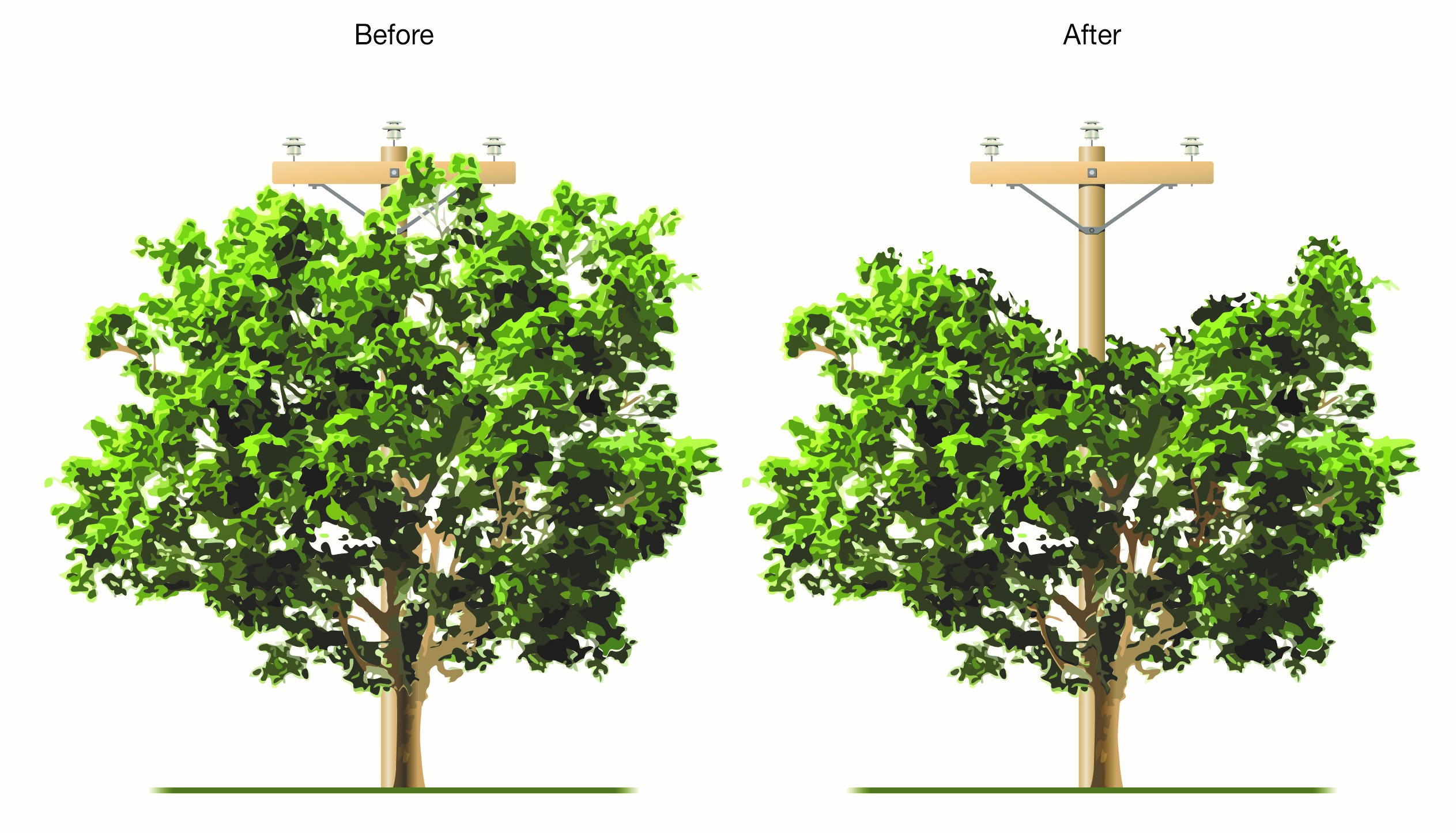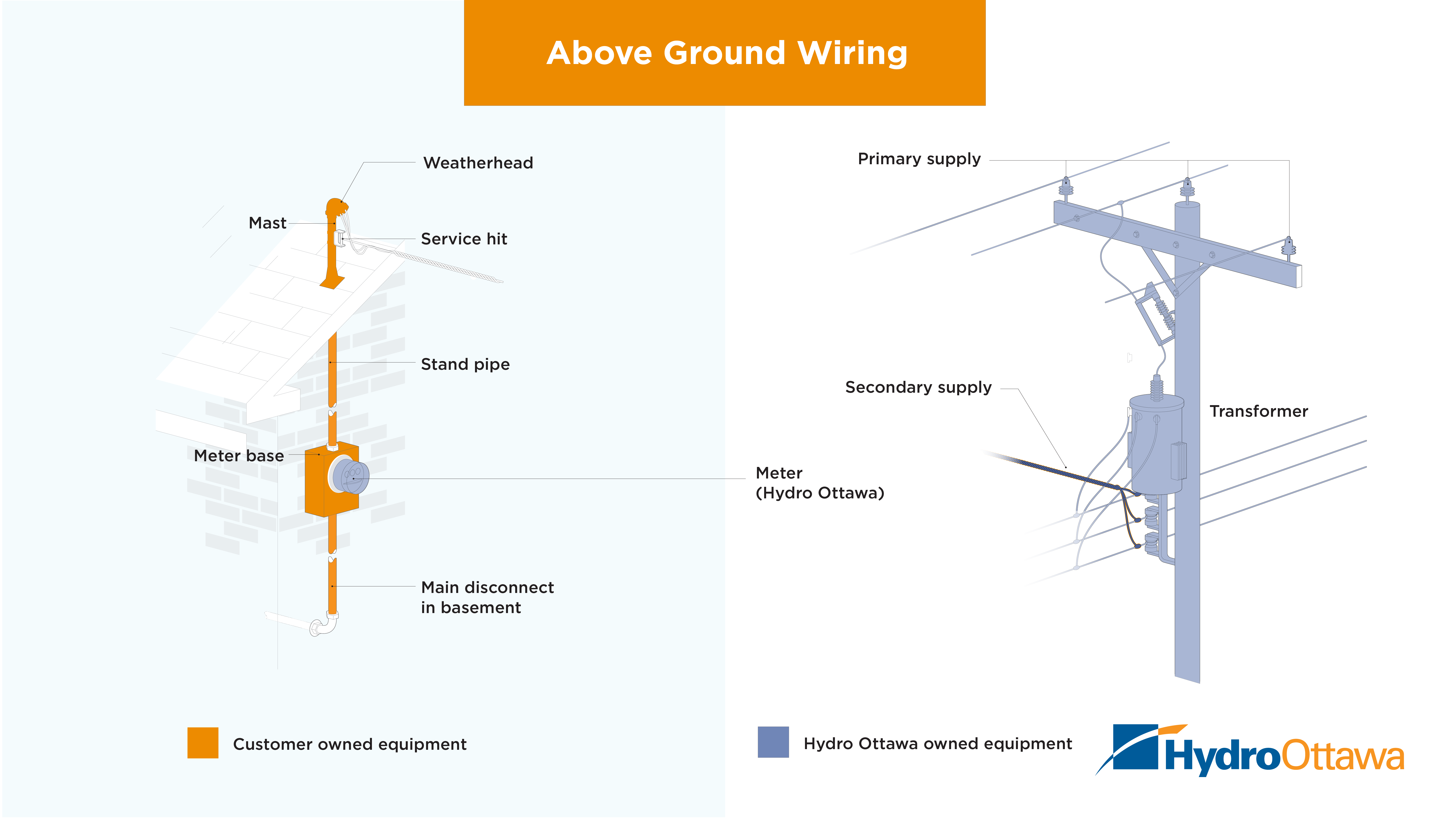Much like a tree’s roots need space to grow, our power lines need clear pathways to keep the lights on.
Trees in your neighbourhood are not just there for aesthetics - they bring fresh air, provide shade, and add a vibrant feel to our city. Whether you’ve strung up a hammock between two trunks or just simply enjoy their beauty on your daily walk, they add so much to our surroundings. But as beautiful as they are, when branches start mingling with power lines, and that’s where the trouble starts.
Keeping branches at bay
Ensuring the safety of our community and the reliability of our power supply involves a critical, year-round task: managing vegetation near power lines. In a typical year, we trim more than 60,000 trees across our service territory.
Among the many maintenance tasks we perform, vegetation management is particularly important because any branches that come in contact with or grow within three metres of a power line pose significant risks and safety hazards to people across Ottawa. If left unchecked, these branches can cause power outages, fires and equipment damage. During winter, snow and ice can weigh down branches, causing them to bend or break — and potentially come into contact with power lines.
To keep these risks at bay, our crews work diligently throughout the year to ensure power lines remain clear of trees and branches. Thanks to their efforts, we’re able to reduce power outages caused by tree contact by up to 40 per cent.
We value the trees in the Ottawa area as much as you do, which is why our tree trimming crews only cut what’s necessary and always use proper pruning techniques. That means we evaluate the structure and unique characteristics of every tree before we begin.
Our trimming crews know which kinds of trees grow faster and may need a more substantial cut to remain outside the tree trimming zone for the next three years. Trees are typically pruned to a “V” or “C” shape, which encourages growth away from powerlines while also preserving the tree’s health.


Remember, main overhead power lines are our responsibility. Approaching these lines can be dangerous and potentially fatal, so never attempt to trim any vegetation around them yourself. Our forestry inspectors continuously monitor the grid for potential issues, but we also rely on you to let us know if a tree on your property grows too close to a main power line.
That said, property owners are responsible for keeping secondary or service wires clear of vegetation and tree foliage. These are the lines that connect homes and buildings to main power lines.
If trees or shrubs on your property are growing too close to these wires, let us know by submitting a non-electrical service request online or call us at 613-738-6400. We can temporarily shut off the electricity so a licensed contractor can safely make the cuts.

Are underground wires the answer?
In some Ottawa neighbourhoods, power lines are already buried underground, raising the question: why not extend this practice everywhere to mitigate weather and tree-related threats? Unfortunately, it's not that simple. With about 3,000 kilometres of cable buried in the Ottawa region, there are several factors we need to consider when comparing underground wiring to overhead wires:
- Cost: Transitioning to a fully underground infrastructure would be expensive, costing anywhere from $2 million to $4 million per kilometre. Serving such a system would also cost residents about 11 times more than an overhead system. The estimated cost of burying all the lines across our service territory would be about $10 billion and take 90 years to complete.
- Repairs and maintenance: Identifying and addressing the cause of a power outage is much more challenging when the infrastructure is buried underground. Also, repairs are typically more disruptive to residents, involving longer downtimes compared to overhead systems. Even minor fixes require street excavation, which often means road closures and traffic disruptions.
- Weather resistance: While underground power lines aren’t exposed to elements like wind and ice or tree-related damage like overhead wires, they remain susceptible to flooding; something our region has been experiencing more in the last number of years.
- Other considerations: Despite these challenges, underground cables often make the most sense in very high-density environments, where space is limited. However, due to the factors outlined above, it’s not always the best solution for every area. Additionally, for new developments, planning to bury power lines from the outset can be a practical choice. Some real estate investors may also opt for buried lines, incorporating the cost into the price tag of their properties.
By helping us keep power lines clear of branches, you're helping our trees flourish while keeping the lights safe and reliable, so both can continue to brighten our community.